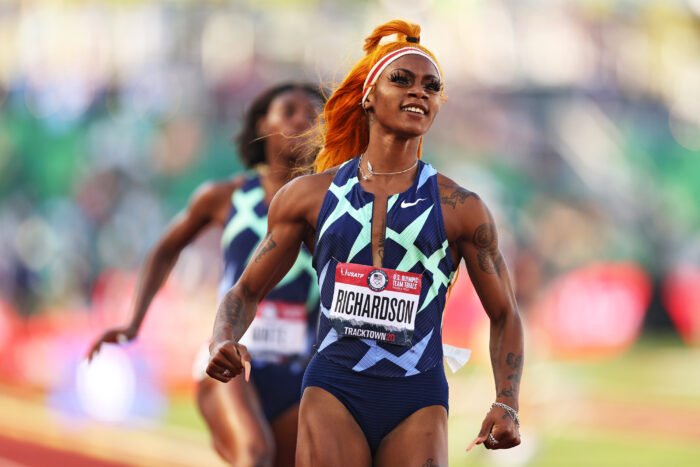Many people find gym culture unwelcoming. A rise in “Toxic Gym Culture” has been noted recently. This blog will guide you through understanding and tackling this issue. Read on to learn more!
Key Takeaways
- Toxic gym culture pressures people to meet unrealistic body standards, leading to harmful fitness trends and negative self-perception.
- Social media amplifies toxic gym culture by showcasing edited images of ‘perfection’, making individuals feel inadequate and pushing them towards unhealthy health fads.
- Misinformation about fitness and nutrition contributes significantly to the problem, with many falling for quick fixes that lead to nutritional deficits and potential harm.
- A lack of diversity and inclusivity in gyms creates an environment where only certain physiques are celebrated, excluding many from participating in physical activities fully.
- Combatting toxic gym culture requires promoting body positivity, educating on healthy fitness practices, creating welcoming environments in gyms, and challenging harmful beliefs within the fitness industry.
Definition of Toxic Gym Culture
Toxic gym culture encompasses intense pressure to conform to unrealistic body standards, fostering a negative and competitive environment centred on physical appearance over overall health.
Such environments can lead to body shaming and exclusionary attitudes, contributing to harmful fitness trends.
Negative competitiveness
Negative competitiveness in the gym creates a harmful environment where people feel pressured to meet unrealistic body standards. This toxic mentality pushes individuals to prioritise physique over health, leading to unhealthy fitness trends and damaging habits.
My own experience reflects this; striving for an unattainable ideal led me down a path of excessive training and negative self-perception.
The relentless pursuit of perfection in the gym overshadows the true essence of fitness: health and well-being.
This drive for constant competition not only fosters a negative gym environment but also contributes to body shaming and gym intimidation. It discourages many from embarking on their fitness journey out of fear of judgement or failure, contrary to promoting inclusivity and support within these spaces.
Pressure to achieve unrealistic body standards
Gyms often push individuals to chase unrealistic body standards, promoting a harmful physique mentality. This pressure can lead people toward unhealthy health fads and intense weight lifting schedules that prioritise looks over well-being.
The desire to match these unattainable ideals fosters body shaming and an unhealthy obsession with appearance rather than focusing on genuine health.
Social media amplifies this issue by showcasing selective, edited snapshots of ‘perfection’, making it seem like these body goals are easily attainable. Many fall into the trap of counting calories obsessively or following unhealthy fitness trends in pursuit of these deceptive benchmarks.
This cycle creates a toxic fitness community where one’s value is unfairly judged by their ability to achieve certain physical standards, sidelining the true essence of personal health and fitness journeys.
Emphasis on appearance over health
The rise of toxic gym culture has brought an unhealthy focus on how we look rather than our well-being. Many gyms and fitness communities push members to pursue unrealistic body standards, often leading to harmful lifestyles.
This obsession with physique mentality overshadows the importance of health advice, creating a scenario where counting calories and intensive weight lifting schedules are more valued than nutritional balance and physical wellness.
Social media fuels this emphasis by showcasing idealised images of fitness that are not attainable for everyone. As a result, individuals succumb to negative gym environments where body shaming becomes prevalent.
The drive for a perfect appearance can lead to disordered eating habits and mental health issues like body dysmorphia. Unfortunately, the fitness industry’s focus remains skewed towards looking good over feeling healthy and strong, sidelining the crucial aspect of fostering a supportive atmosphere that celebrates all forms of progress.
Factors Contributing to Toxic Gym Culture
Factors contributing to toxic gym culture include the influence of social media, widespread misinformation about fitness and nutrition, lack of diversity and inclusivity in fitness spaces, as well as toxic gym environments.
These factors play a significant role in shaping the negative dynamics experienced within the fitness community.
Social media influence
Social media has drastically shaped gym culture, turning fitness into a competitive display rather than an individual journey towards health. Platforms are flooded with images of perfection, pushing unrealistic body standards that many feel pressured to achieve.
This online showcase emphasises physique over genuine health, leading followers into unhealthy fitness trends and lifestyles. My personal scroll through social media often leaves me feeling inadequate compared to the airbrushed versions of reality presented by influencers who promote intense weight lifting schedules and counting calories as the only path to success.
It’s not about being better than someone else; it’s about being better than you were yesterday.
Through this lens, social media fuels exclusivity in fitness, making it seem like only certain bodies belong. This digital environment discourages people from embracing their unique journeys or understanding that real progress goes beyond superficial metrics.
Moving forward to address misinformation about fitness and nutrition stands as a critical step in shifting this narrative.
Misinformation about fitness and nutrition
Misinformation about fitness and nutrition fuels toxic gym culture, making people chase unrealistic body standards through harmful lifestyles. Fake health fads, pushed by social media, often suggest quick fixes like extreme dieting or intense weight lifting schedules.
I found myself caught up in this cycle once, trying to follow a diet plan that promised rapid weight loss without considering the nutritional deficits it caused.
Many individuals fall victim to unhealthy fitness trends because they lack proper knowledge about sustainable health practices. They count calories obsessively or adopt weightlifting techniques without understanding the potential risks to their bodies.
My journey took a turn for the better only after seeking advice from qualified professionals who helped me focus on health over physique mentality, proving how dangerous these misconceptions can be if left unchecked.
Lack of diversity and inclusivity
Gyms often highlight a narrow range of body types, leaving many feeling excluded. This lack of diversity and inclusivity fosters an environment where only certain physiques are celebrated, contributing to toxic gym culture.
Highlighting diverse bodies and fitness journeys is essential in combating this issue. By welcoming all levels of fitness and different body shapes, gyms can create a more inclusive space that encourages health over physique mentality.
The emphasis on appearance over health has led to unrealistic body standards being the norm in many gyms. This perpetuates body shaming and can dissuade people from participating in physical activities.
Ensuring everyone feels included regardless of their starting point or goals is crucial for a healthy fitness industry.
Toxic gym environments need addressing next to tackle these widespread issues effectively.
Toxic gym environments
Toxic gym environments often breed a culture of intimidation and exclusion, creating an unwelcoming atmosphere for many. These settings push unhealthy fitness trends and harmful lifestyles, fuelled by a fixation on physique rather than health.
The pressure mounts as individuals feel they must adhere to unrealistic body standards or intense weightlifting schedules, overshadowing the true essence of personal well-being.
Social media plays a pivotal role in amplifying these negative gym environments, spreading misinformation about nutrition and fitness which contributes to the vicious cycle of body shaming and gym intimidation.
Such spaces discourage newcomers and even seasoned fitness enthusiasts due to their emphasis on exclusivity over inclusivity.
In toxic gym cultures, the obsession with perfection trumps the pursuit of health.
NOTE: Transform Your Body With the Best Hiit Workout For Fat Loss.
Negative Impact of Toxic Gym Culture
Toxic gym culture has been found to have detrimental effects on both mental and physical health, contributing to body dysmorphia and eating disorders. Unhealthy fitness trends perpetuated by this culture can lead to disordered and unhealthy eating habits.
Mental and physical health effects (body dysmorphia, eating disorders)
Toxic gym culture can have severe mental and physical health effects, contributing to body dysmorphia and eating disorders. The pressure to achieve unrealistic body standards and the emphasis on appearance over health in toxic fitness communities can lead to negative self-perception and unhealthy relationships with food.
Disordered eating habits may develop as individuals strive for unattainable physique ideals, ultimately leading to serious physical consequences. Body dysmorphia, characterised by obsessive preoccupation with perceived flaws in one’s appearance, can also result from the toxic mentality prevalent in these environments.
It is crucial to address these harmful repercussions of toxic gym culture through promoting a shift towards prioritising overall well-being rather than solely focusing on external appearance.
Disordered and unhealthy eating habits
People develop disordered and unhealthy eating habits as a result of toxic gym culture. This can include restrictive dieting, extreme calorie counting, and obsession with achieving unrealistic body standards.
The emphasis on appearance over health in the fitness industry contributes to these harmful behaviors, leading to negative impacts on mental and physical well-being.
Social media has played a significant role in promoting unhealthy eating habits within toxic gym culture. Platforms often showcase fad diets, extreme weight loss methods, and promote an unattainable physique mentality that fuels disordered eating patterns.
Obsession with external validation and perfection
Transitioning from the negative impact of disordered and unhealthy eating habits, the toxic gym culture also perpetuates an obsession with external validation and perfection. This emphasis on seeking approval from others rather than focusing on personal progress can lead to detrimental mental health effects such as feelings of inadequacy and low self-worth.
The relentless pursuit of perfection in physical appearance, promoted by unrealistic body standards in fitness culture, often results in individuals feeling dissatisfied with their own bodies despite making significant progress towards improved health and fitness levels.
Ways to Combat Toxic Gym Culture
Combatting Toxic Gym Culture involves promoting body positivity, educating on healthy fitness practices, creating inclusive gym environments, encouraging self-care and focusing on overall health rather than just appearance.
Challenging and rejecting toxic beliefs and behaviors in the fitness industry is crucial for fostering a healthier and more positive gym culture.
Promoting body positivity and diversity
Encourage embracing diverse body types and fitness journeys to combat exclusivity in the gym culture. Highlighting the beauty of various body shapes and celebrating fitness achievements at all levels can counteract the harmful impact of unrealistic body standards perpetuated by toxic gym culture.
By promoting inclusivity, gyms can create a supportive environment that focuses on overall health rather than appearance, helping individuals feel valued regardless of their physique.
Fostering a positive body image and inclusive atmosphere within fitness communities is vital in combating toxic gym culture’s negative effects on mental well-being. Celebrating diverse bodies and fitness capabilities encourages people to prioritise holistic wellness over unrealistic ideals, fostering a healthier mindset towards exercise and self-improvement.
Educating on healthy and sustainable fitness practices
Transitioning from promoting body positivity and diversity to educating on healthy and sustainable fitness practices, it is crucial to provide accurate information about exercise and nutrition.
Highlighting the importance of balanced workouts and wholesome eating habits can help individuals make informed choices in their fitness journeys. Empowering people with knowledge about realistic body standards, effective weightlifting techniques, and healthy health advice can counter the damaging impact of toxic gym culture.
Educating on sustainable fitness practices not only promotes physical well-being but also fosters a positive mindset towards overall health.
Empowering individuals with accurate information about exercise, nutrition, realistic body standards, effective weightlifting techniques, as well as healthy health advice is a key step in combatting toxic gym culture.
By promoting a balanced approach to workout routines and emphasising the significance of wholesome eating habits, individuals are equipped to make informed decisions that contribute positively to their overall health journey.
Creating welcoming and inclusive gym environments
Transitioning from educating on healthy and sustainable fitness practices to creating welcoming and inclusive gym environments, it’s vital to address the toxic gym culture that has alienated many individuals.
Fostering a supportive atmosphere that celebrates diverse body types, fitness levels, and fitness journeys is key in combatting exclusivity and body-shaming prevalent in toxic gym culture.
Embracing inclusivity not only encourages more people to engage in physical activity but also enhances overall well-being by providing a sense of belonging within the fitness community.
Creating an environment where individuals feel accepted, supported, and empowered can help counteract the negative impact of toxic gym culture, promoting a positive approach to health and fitness for all.
Incorporating inclusive language, imagery, and programs tailored towards promoting acceptance rather than judgment underpins an ever-evolving commitment to cultivating welcoming spaces within the fitness realm.
Encouraging self-care and focusing on overall health rather than appearance
Encouraging self-care and focusing on overall health rather than appearance is crucial in combating toxic gym culture. By promoting a holistic approach to wellness, individuals can prioritise their mental and physical well-being over societal beauty ideals.
Embracing diverse body types and fitness levels while celebrating personal achievements fosters a supportive and inclusive environment within the fitness community. Additionally, educating individuals about sustainable fitness practices empowers them to make informed choices that prioritise long-term health over short-term appearances.
In highlighting the importance of self-care and overall health in the context of fitness culture, individuals can shift the focus from external validation to internal well-being, creating a more positive and nurturing gym environment for everyone.
Challenging and rejecting toxic beliefs and behaviors in the fitness industry
Challenging and rejecting toxic beliefs and behaviours in the fitness industry is crucial for promoting a healthy workout environment. Emphasising inclusivity, diversity, and body positivity helps to combat harmful gym mentalities.
By celebrating different body types and fitness levels, it’s possible to create a more supportive fitness community that values overall health over appearance. Educating individuals about sustainable fitness practices, countering unrealistic body standards with evidence-based health advice, can help challenge toxic beliefs prevalent in the fitness industry.
Highlighting diverse body types combats the exclusivity characteristic of toxic gym culture. This approach encourages people from all walks of life to participate in physical activity without feeling intimidated or excluded.
Conclusion
The negative impact of toxic gym culture on mental and physical health is a growing concern, with unrealistic body standards and unhealthy fitness trends perpetuating harmful lifestyles.
Combating this issue involves promoting body positivity, educating on sustainable fitness practices, creating inclusive gym environments, and rejecting toxic beliefs in the fitness industry.
These strategies are practical and efficient ways to challenge the exclusivity and body-shaming prevalent in toxic gym culture. By emphasising the importance of fostering a supportive and diverse fitness community, we can lead to significant improvements in overall well-being for individuals navigating the complexities of the fitness realm.
Consider exploring further resources or services to continue learning about combating toxic gym culture beyond this article’s scope.





